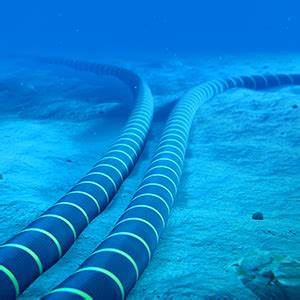
Executive Summary
A significant disruption in internet services has swept across several countries in East Africa, including Kenya, Tanzania, Rwanda, and Uganda, due to a major cut in a crucial subsea fiber-optic cable system. The outage has been attributed to failures affecting the SEACOM and Eastern Africa Submarine Cable System (EASSy) subsea cable networks, which serve as critical infrastructure for internet connectivity in the region.
The impact has been widespread, with reports of sluggish internet speeds, intermittent connectivity, and in some cases, near-total internet blackouts in affected areas. Internet monitoring organizations have confirmed the severity of the incident, with Tanzania and the French island of Mayotte being among the worst-hit regions.
Telecom companies in the affected countries have acknowledged the issue and have been working to reroute traffic and activate redundancy measures to minimize the disruption. However, the recovery process is expected to take several days before services are fully restored.
The current subsea cable cut incident comes on the heels of a similar disruption that affected multiple cable systems along the western coast of Africa just a few weeks ago. This underscores the vulnerability of the region’s internet infrastructure and the critical need for robust and resilient connectivity solutions.
In this comprehensive blog post, we will delve into the details of the East African internet outage, explore the potential causes and impact, and examine the efforts undertaken by authorities and service providers to address the crisis. Additionally, we will discuss the broader implications of these recurring subsea cable incidents and the measures that can be taken to enhance the resilience of the region’s digital infrastructure.

The Extent of the Outage
The current internet outage in East Africa has been described as a significant disruption, affecting multiple countries in the region. According to reports, the incident is linked to failures in the SEACOM and EASSy subsea cable systems, which serve as critical infrastructure for internet connectivity in the region.13The affected countries include Kenya, Tanzania, Rwanda, and Uganda, with reports of sluggish internet speeds, intermittent connectivity, and in some cases, near-total internet blackouts.15 The internet monitoring organization NetBlocks has confirmed the disruption, stating that “Network data show a disruption to Internet connectivity in and around multiple East Africa countries; the incident is attributed to failures affecting the SEACOM and EASSY subsea cable systems.”13 Cloudflare Radar, another internet monitoring platform, has also reported significant impacts on internet traffic, particularly in Tanzania, where connectivity has fallen to around 30% of expected levels.13Furthermore, the organization has noted that Malawi, Mozambique, and Madagascar have also been affected by the outage.13
Telecom companies in the affected countries have acknowledged the issue and have been working to address the problem. Kenya’s Safaricom, for instance, has confirmed the outage and stated that it has “activated redundancy measures to minimize service interruption.”24
Potential Causes and Impact
The immediate cause of the subsea cable cuts that have led to the internet outage in East Africa is still under investigation. However, some industry experts have provided insights into the possible reasons for the disruption.According to Ben Roberts, the Group Chief Technology and Innovation Officer at Liquid Intelligent Technologies, a pan-African internet services provider, the outages on the SEACOM and EASSy submarine fiber cables that connect Kenya and South Africa have severely impacted internet services in the region.345 Roberts further explained that the issue has been exacerbated by the fact that three other crucial submarine cables in the Red Sea – SEACOM, Europe India Gateway (EIG), and Asia-Africa-Europe 1 (AAE-1) – have also suffered cuts and remain unrepaired, leading to the widespread outage.4 The West Indian Ocean Cable Company (WIOCC), an investor in the EASSy cable system, has disclosed that the EASSy cable experienced a cut between South Africa and Mozambique, where the cable runs along the continent’s east coast.24 The impact of the subsea cable cuts has been significant, with reports of degraded internet services, slow speeds, and in some cases, near-total internet blackouts in the affected regions.25
For businesses and individuals, the outage has disrupted critical services, hampering communication, e-commerce, and access to online resources. The disruption has also had implications for the region’s economy, as many sectors have become increasingly reliant on stable and high-speed internet connectivity.
Efforts to Restore Connectivity
In response to the internet outage, authorities and service providers in the affected countries have been working to address the issue and restore connectivity.The Communications Authority of Kenya (CA) has confirmed the deep-sea fiber cut that occurred at the Mtunzini teleport station in South Africa, affecting multiple fiber cables serving Kenya, including the EASSy and SEACOM cables.4The CA has directed service providers to take proactive steps to secure alternative routes for their traffic and is closely monitoring the situation.4 Kenyan operator Safaricom has also acknowledged the outage and stated that it has “activated redundancy measures to minimize service interruption and keep you connected as we await the full restoration of the cable.”4The company has assured customers that it is working to restore a stable internet connection.4
In Tanzania, the Minister of Information, Communication, and Information Technology, Nape Nnauye, has stated that the government has been informed by EASSy and SEACOM of the disruption caused by a fault on the cables between Mozambique and South Africa. Nnauye has stated that “there are ongoing efforts to solve the problem” and that the country will experience “very low access to internet and international voice calls” until the issue is resolved.27The East African Marine Systems (TEAMS) cable, which has not been affected by the fiber cut, is currently being utilized for local traffic flow in Kenya, while redundancy on the South Africa route has been activated to minimize the impact.4
However, the recovery process is expected to take several days before services are fully restored. Telecom companies in the region have urged customers to be patient as they work to address the issue.4
Broader Implications and Resilience Measures
The current internet outage in East Africa is not an isolated incident. In fact, it comes just weeks after the western coast of Africa suffered from similar outages due to multiple cable damage incidents.134 This underscores the vulnerability of the region’s internet infrastructure and the critical need for more robust and resilient connectivity solutions.
The reliance on a few key subsea cable systems, such as SEACOM and EASSy, has made the region’s internet connectivity susceptible to disruptions. The recent cuts in the Red Sea cables, which also affected connectivity in East Africa, have further exacerbated the problem.4
To enhance the resilience of the region’s digital infrastructure, a multi-pronged approach is necessary. This may include:
- Diversifying the subsea cable infrastructure: Investing in the development of additional subsea cable systems and routes to provide redundancy and reduce the risk of single points of failure.
- Enhancing cable protection and monitoring: Implementing robust measures to protect subsea cables from potential threats, such as anchor drags and natural disasters, and enhancing monitoring systems to detect and respond to cable incidents more effectively.
- Promoting regional collaboration and coordination: Fostering stronger cooperation among countries in the region to share information, jointly invest in infrastructure, and develop coordinated emergency response plans.
- Improving connectivity alternatives: Exploring and investing in alternative connectivity solutions, such as satellite-based internet, to provide backup options in the event of subsea cable disruptions.
- Strengthening regulatory frameworks: Developing comprehensive regulatory frameworks that ensure the resilience and reliability of the region’s internet infrastructure, with clear roles and responsibilities for stakeholders.
By addressing these challenges and implementing resilience measures, East African nations can work towards building a more robust and reliable digital infrastructure that can withstand the impact of future subsea cable incidents and ensure uninterrupted internet connectivity for businesses and individuals alike.
Conclusion
The ongoing internet outage in East Africa, driven by a significant subsea cable cut, has had a widespread and disruptive impact on the region’s connectivity. The failure of the SEACOM and EASSy cable systems has crippled internet services across multiple countries, leading to sluggish speeds, intermittent connectivity, and in some cases, near-total blackouts.
Telecom companies and authorities in the affected countries have been working to address the issue, rerouting traffic and activating redundancy measures. However, the recovery process is expected to take several days, underscoring the vulnerability of the region’s digital infrastructure to such incidents.
The current outage is not an isolated event, as the East African region has faced similar challenges in the past, with the western coast of Africa also experiencing disruptions due to cable damage. This highlights the critical need for more robust and resilient connectivity solutions that can withstand the impact of such disruptions.
By diversifying subsea cable infrastructure, enhancing cable protection and monitoring, promoting regional collaboration, and strengthening regulatory frameworks, East African nations can work towards building a more resilient digital ecosystem that can better withstand future challenges and ensure uninterrupted internet connectivity for businesses and individuals alike.
As the region continues to grapple with the consequences of the current outage, it is clear that addressing the underlying vulnerabilities and investing in the long-term resilience of the region’s internet infrastructure must be a top priority for policymakers and industry stakeholders.







